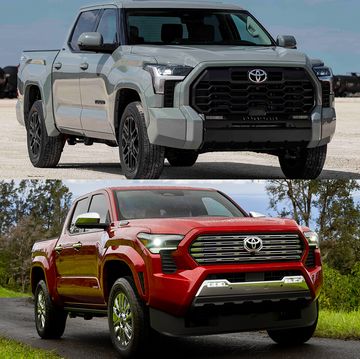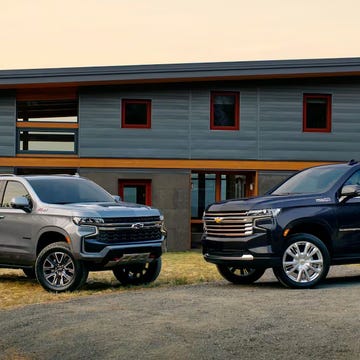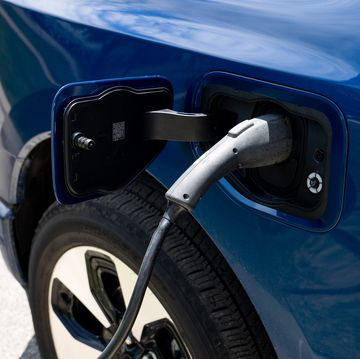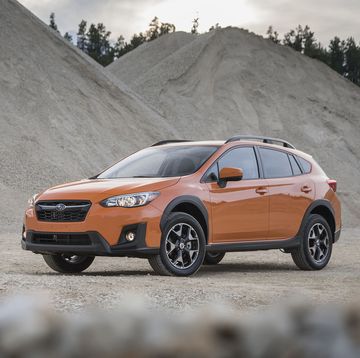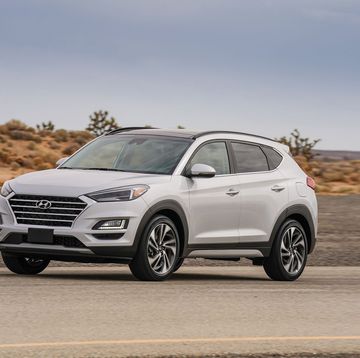An axle is a rod or shaft that rotates the wheels and supports the weight of your vehicle. Axles are essential components of any vehicle and come in three main types: front, rear, and stub. Let's break down the types of axle and look at how to choose the right axle ratio for your vehicle.
What Is an Axle?
A key component of your vehicle, the axles are central shafts that connect to the wheels. They typically turn with the wheels, according to Car From Japan. Since axles control the power that propels the wheels, every vehicle has to have axles in order to operate.
How Many Axles Does a Car Have?
The number of axles in a car depends on the type of vehicle, as Car From Japan states. In most cases, cars have two axles to rotate the wheels. Larger vehicles that carry more passengers and have more wheels may have more axles.
It's easy to identify the number of axles that your car or any other vehicle has. Just look at your car from the side, then count the pairs of tires. Most cars have four tires in total, or two sets of tires, with one in the front and one in the rear. Two sets of tires equal two axles.
Factors That Decide the Type of Axle in a Car
Several factors determine what type of axle a vehicle needs. For example, the technical requirements and the amount of force produced go a long way in deciding the axle type.
Some vehicles have pre-designed axles in standard formats. Others have customized axles that fit the needs and specifications of the car. Customized axles tend to work best for cars since they allow for more personalized control over the wheels. These axles can adjust the wheels' speed and torque to a finer degree.
Types of Axle
Axles come in three standard types, according to Quadratec:
- Rear Axle: This axle is responsible for delivering power to the driving wheels. It comes in two halves, known as half shafts, which are connected by the differential. In most cases, rear axles are live, meaning they rotate with the vehicle's wheels.
- Front Axle: Located in the front of the vehicle, this axle is responsible for assisting with steering and processing shocks from the uneven surface of the road. They have four main parts, which are the beam, the swivel pin, the track rod, and the stub axle. Front axles must be as sturdy as possible, and that's why they're usually made from carbon steel or nickel steel.
- Stub Axle: Stub axles are attached to the vehicle's front wheels, with kingpins connecting these axles to the front axle.
Types of Rear Axle
Not all rear axles are the same, as the support and mounting methods determine the type. According to The Engineers Post, there are three types of rear axles:
- Semi-Floating Axle: This rear axle connects the wheel to the flange on the exterior of the axle shaft and holds it securely. One bearing supports the axle shaft, and the other goes inside the axle casing. Since it has two bearings, a semi-floating axle needs to be larger than the other options to produce the same torque. Semi-floating axles are used for cars, SUVs, and mid-size trucks, such as half-ton and light duty pickups.
- Full-Floating Axle: True to its name, this axle type effectively floats in place and maintains its position, thanks to two bearings. It's designed to transmit driving torque only. Full-floating axles tend to work best for larger vehicles, such as heavy-duty trucks. Some mid-size trucks that have larger towing capacities or those that use four-wheel drive extensively can also benefit from full-floating axles.
- Three-Quarter Floating Axle: It's more complex than the semi-floating axle and also more reliable. It helps maintain wheel alignment and handles side thrust and driving torque.
Types of Front Axle
According to Meineke, vehicles have two main types of front axle. These are:
- Dead Front Axle: These axles stay in place and don't rotate with the wheels. Most dead front axles and differentials have housings that prevent them from coming into contact with water or dirt.
- Live Front Axle: Unlike dead front axles, live front axles deliver driving power from the gearbox to the front wheels.
Types of Stub Axle
As The Engineers Post explains, there are four types of stub axle:
- Elliot: This type uses a kingpin, a yoke, and a cotter to connect to the front axle.
- Reverse Elliot: This type has the opposite arrangement of a standard Elliot stub axle.
- Lamoine: This stub axle type has an L-shaped spindle instead of a yoke-type hinge.
- Reverse Lamoine: It has the opposite layout of a standard Lamoine stub axle.
How to Know When Your Axle Is in Disrepair
Because axles are essential to your car's operation, it's important to keep them working properly. As Meineke states, if you see one of the following signs, you can tell that your axle is in disrepair:
- You hear a loud clunk when you put your car into gear.
- You feel vibrations when you operate your car.
- Your vehicle won't move forward or backward even though it's running.
How to Choose the Right Axle Ratio for Your Pickup Truck
In addition to unique torque, motor, and transmission specs, many trucks also have custom axle ratios. According to Edmunds, an axle ratio like 3.55:1 means that the drive shaft turns 3.55 times each time the wheel turns once.
In most cases, a standard axle ratio works well for most drivers who don't expect to haul large loads. However, if you're planning to tow heavy trailers or haul large loads, you may want the highest axle ratio possible.
Axle Issues to Consider
When choosing the right axle ratio for your vehicle, keep a few things in mind. Remember:
- A vehicle's window sticker reveals the fuel economy data for the standard axle ratio. If the truck has a custom axle ratio option, the fuel economy is automatically lower.
- It's impossible to compare different automakers' optional axle ratios. The various tire sizes affect the system gear, which impacts the final figure.
- Many dealers refer to lower axle ratios as tall gears and higher axle ratios as short gears. The former usually have better gas mileage, while the latter can generally haul heavier loads.
Axles are just one of the features that are essential for keeping your car on the road. Learn more about our favorite cutting-edge features in our comparison tests and first drive reviews.
Information and research in this article verified by ASE-certified Master Technician Duane Sayaloune of YourMechanic.com. For any feedback or correction requests please contact us at research@caranddriver.com.
Sources:
https://carfromjapan.com/article/car-maintenance/how-many-axles-does-a-car-have-know-it-here/
https://www.quadratec.com/jeep_knowledgebase/article-134.htm
https://www.theengineerspost.com/types-of-axles/
https://www.meineke.com/blog/everything-you-need-to-know-about-your-cars-axles/
https://www.edmunds.com/car-buying/how-to-choose-the-right-axle-ratio-for-your-pickup-truck.html


